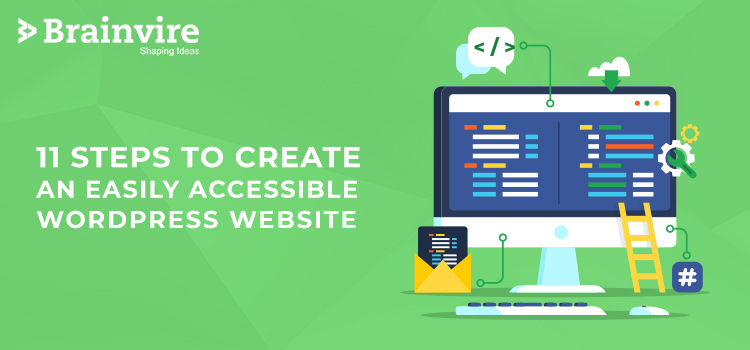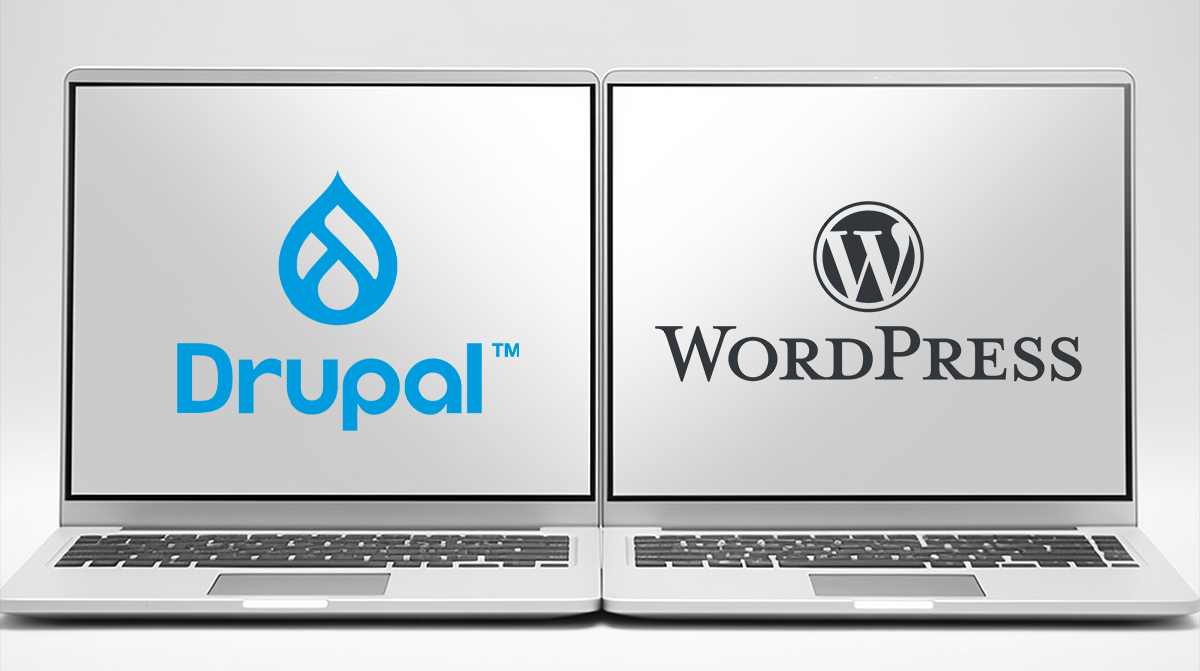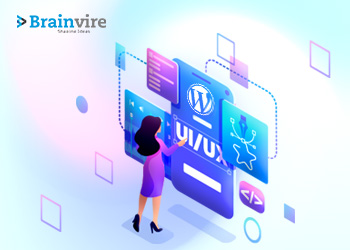
Want to build a mind-blowing website? Well, you have stumbled upon the right place. This blog covers the very details that go into structuring a WordPress website that can be accessed by all. The following topics are what you can glance through over here:
- What is accessibility?
- What is WordPress accessibility?
- How to make an accessible WordPress site?
- Why does accessibility matter?
- Final thoughts
When it comes to launching a brand new website, a business owner is likely to think about a list of requisites that is mandatory to attract visitors to his/her website. For many though, accessibility isn’t a criterion that would top the list. So coming to a very important question…
What is accessibility?
As per the World Wide Web Consortium (W3C), web accessibility refers to how easily those with disabilities surf the internet. In simpler terms, web accessibility means how well can people with disabilities perceive, understand, navigate, and interact online.
According to the World Health Organization, 285 million people have vision impairment and about 1 billion individuals have disabilities. So, approximately 15 percent of the world’s total population has disabilities. Therefore, every website owner from digital marketers, to editors, and anybody else involved in any online business should consider building an accessible website.
Hence, it becomes obligatory for webmasters and any WordPress development company to make sites that are accessible for individuals with vision impairments and motor disabilities who cannot use a mouse. Additionally, your website should also cater to those visitors whose primary language isn’t your language.
What is WordPress accessibility?
WordPress accessibility is a practice of making your website and its contents accessible for all the users, including the ones with disabilities. Many websites compromise on accessibility for the sake of a beautiful design. But as a good brand, you must provide a smooth user interface to all your users.
Meanwhile, businesses should also remember that web accessibility issues are not limited to only those with frailties. The following changes to your website’s design can be advantageous to different groups of people:
i. It can be beneficial for all those who use devices with small screens or different input modes.
ii. It is definitely useful for the elderly.
iii. Such websites can be easy to use for those with a temporary disability, such as a broken arm or lost glasses.
iv. Moreover, users who are vulnerable to situational limitations, including a bright outdoor location or a noisy environment can also benefit from accessible WP sites.
v. Lastly, an accessible website is a blessing for individuals who are facing the issue of a slow internet connection.
How to make an accessible WordPress site?
As per Web Content Accessibility Guidelines (WCAG), the characteristics of an accessible website are as follows:
1. The website should be perceivable in the sense that the components of the user interface must be presented in a clear and concise manner that can be understood by one and all.
2. Your website should be operable. People should be able to navigate through the website no matter what device or method they use.
3. Make sure that all your visitors can easily understand the interface and information available on your website in one go.
4. When it comes to content, keep in mind that it should be robust and easily understandable for a variety of audiences.
To quickly understand how your site performs across these four WCAG principles, you can scan any page with the Web accessibility checker, which analyzes your content and displays the findings organized by Perceivable, Operable, Understandable, and Robust. This gives you a clear view of what your website passes and where it fails, helping you prioritize the next steps
Making use of accessible WordPress themes can help you do the needful. But if you are just looking to make limited accessibility improvements without redesigning everything, you can use the WordPress accessibility plugin, which is a quick and efficient solution to improve compliance according to ADA, WCAG, EAA, UK Equality Act, AODA, ACA, Australia DDA, German BITV, BGG, and other global accessibility standards. It is compatible with 700+ platforms and supports 140+ languages, making it easier for businesses to implement accessibility features without technical effort.
Mentioned below are a few tips and tricks that can help you build a WordPress website that can be accessed by all.
1. Install the WordPress Accessibility plugin
By installing and activating the WP Accessibility plugin, you can incorporate many useful features that follow the WP accessibility guide.
Among other things, this feature allows visitors to skip links so that they can directly land on the content page. This functionality is useful for those individuals who use screen readers. Additionally, this feature also allows you to a toolbar that allows people with vision impairment to change the size of the font, grayscale, and contrast in the website.
This tool also helps in removing title attributes from the images that are inserted in the content.
2. Adjust the color contrast
As per statistics, there are more than 2.7 million color blind people in the world. All these individuals have one of the three types of color blindness: deficient color vision, two-color vision, or total color blindness. If you want to make sure that your website design works with or without colors, be conscious of contrast and color ratios.
Furthermore, you can use high-contrast color options including black and white to make your website more comprehensible. WCAG recommends a contrast ratio of 4.5:1 body text. To make your website looks more creative, you can also use patterns or textures to enhance the contrast.
It is best if you use a high contrast design that is easier to understand by the visually impaired to view and process the information. You can hire a WordPress web developers to implement this.
3. Incorporate image ALT text
This functionality allows you to describe the appearance and function of an image on a web page.
This technique was originally designed to increase the accessibility for the screen readers to interpret an image. But now, image ALT text is used as part of the SEO strategy that targets keywords so that it can be identified and recognized by the search engine crawlers.
Now, if you are accustomed to using ALT text to stuff keywords on the site, you will want to revise your process because this can ruin the user experience for your readers. But if you are clearly able to describe the image, you will easily be able to incorporate useful keywords.
There are a few individuals who cannot browse the internet using a mouse because of reduced motor skill abilities. Such people often use their keyboard to navigate through websites.
The main issue that the majority of these people face is when the top items of the drop-down menu are accessible and the submenus are not. You can take care of this situation by assigning shortcuts or access keys. For instance, pressing “1” will take you to the home page, “2” will take you to the service page, etc.
5. Make the interactive elements accessible
Your site should have buttons and menus that are effortlessly accessible by both keyboard and mouse. Also, ensure that visitors can highlight your links using both pieces of hardware.
Secondly, you will also have to ensure that the navigation is accessible using the keyboard as well. Don’t forget to include skip links on top of each page.
After this, make sure every form field has a corresponding label. Along with this, don’t forget to offer input assistance with a warning or confirmation message, which can be easily read by people who have vision impairment disability.
While you are at it, you can also describe downloadable media files as PDFs, audios, documents, or video content along with highlighting the accompanying buttons that lead to the download option.
If possible, try and provide transcripts, sign language or caption with the video content that you display on your webpage.
6. Use clean and good HTML code
Using a clean HTML code is fundamental because this kind of solid HTML structure is what makes the site more accessible.
When you incorporate all the proper header tags, bulleted list, title tags, well-written meta description, and alt tags, you are informing the visually impaired where everything is located on the page.
Simply put, by doing all this, you are also making it easier for your regular visitors to pay attention to a specific piece of content on your page. For this, you can hire WordPress Developers for writing clean code.
7. Include a style-free option
One important thing you can incorporate is a simplified version of your website that can omit all or a majority of the CSS.
You can slot in this trick without having to compromise on the layout, content, or any navigational element on your website. From a developer’s point of view, you can accomplish this tactic by separating your website’s structure and content.
8. Avoid sudden graphics and remove time limits
When it comes to designing for accessibility, flashing content is not a good idea. This is because such sudden flashes, in the form of fast-moving images and lights, are known to create seizures in those who are vulnerable to such flashes.
Speaking of accessibility, make sure that any media you have on your site has the option to pause, play, and replay as and when the visitor deems fit. You can also provide alternatives for disabled people when introducing a time-sensitive segment to your websites, such as a test or a quiz.
9. Use accessibility-ready WP themes
When you are developing your WP theme, take some extra time out and pay close attention to the empty space around the elements of the page.
Some of the default WP themes such as Twenty Fifteen and Twenty Sixteen are great examples to create highly accessible themes.
10. Make the content readable
Next, it is very important to create a webpage that is easily readable. Lengthy paragraphs, crowded texts, small fonts, too much information, and lots of images and videos often make the page difficult to scan.
So when you are publishing a blog post, make sure that the font is large enough to be readable. You don’t need to use heading to make the text bold or increase the font size. Instead, you can use the <strong> tag or em, q, or bq tags along with the list of visual hierarchy. To make your content more readable, use ordered and unordered lists.
It is essential to have smooth navigation links in your site design. By using these links, visitors with a disability can skip past the navigation bar or menu and search boxes to jump to certain areas by simply clicking on them.
You must place these links wherever necessary so that users can skip to the significant part of the content. Some categories of these links include:
a. Jump to start
b. Jump to the navigation bar
c. Skip to the main page
There are a few WordPress themes that provide such accessible links. Other themes, however, might not provide these links, so you might have to add these links by yourself.
Why does website accessibility matter?
Of late, the internet has become an essential resource in life for education, employment, government, healthcare, commerce, retail business, recreation, and many other things. So for equal access and opportunities, it is important for the website to be accessible to all the users alike.
Additionally, an accessible website can help people with disabilities to participate actively in society.
Other than this, one of the easiest ways to do business is by building an accessible website. If your website is well optimized, you can tap into customers with disabilities too. For example, you can target those who cannot read print material, people who have difficulty in physically going to a retail store, among other things.
More importantly, what you do with accessibility also intersects with various other online best practices such as your web design, SEO tactics, usability, and more.
By using an accessible website, you can interact with several individuals who are ridden with disabilities. So, you can easily overcome the disability barriers to print, audio, and visual media by incorporating the above-mentioned pointers.
Final thoughts
Never forget to incorporate web accessibility when building a new website. By doing this, you can ensure that every user has easy access to your site.
If your eCommerce website is easy to navigate, it will definitely pave the way towards a better user experience for all your potential visitors. In addition to all this, optimizing your site will also reap great benefits towards better SEO practices.
If all this seems quite some task to follow, then we Brainvire scout for WordPress development services to assist you in making a fully functional website that can be used by one and all.
Related Articles
-
Why WordPress Development Services Are Getting Popular?
If you are planning to develop your business website from scratch or give a whole new look to our WordPress Website Development Services is the answer to all your needs.
-
Squarespace Vs WordPress – Which Is The Best Website Builder In 2023?
If you’re planning to build a website, start a full-fledged blog, or optimize your newly developed website further, Squarespace and WordPress are among the best tools to choose from! Squarespace
-
A Step-By-Step Pre-Launch Guide for a WordPress Website
It is not a one-day job to create and launch a website. This takes a lot of preparation and commitment. To shape and establish a functional site, several distinct pieces



